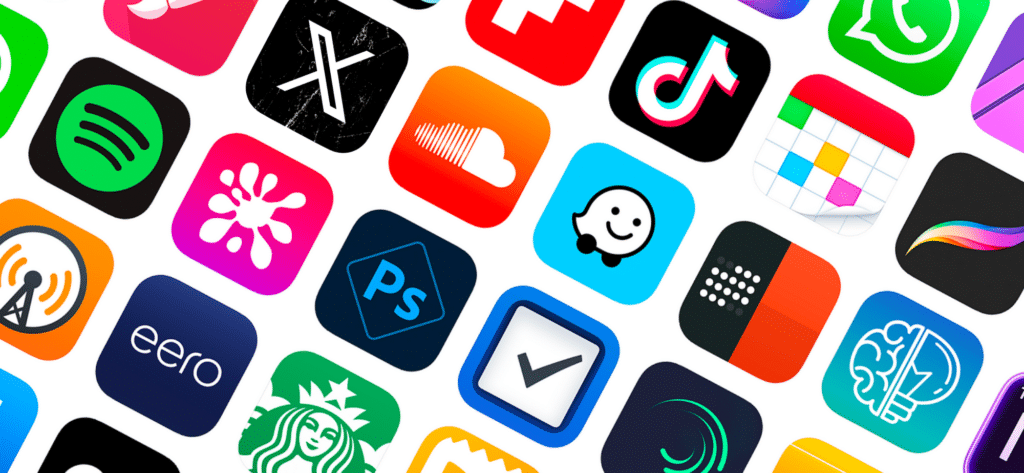How much does it cost to develop an app? Whether you’re running a well-established business or taking the first steps into entrepreneurship, this question is on the minds of everyone starting a software development project. However, arriving at a precise answer isn’t as straightforward as you might think.
Asking software developers how much it costs to develop an app is comparable to asking a home builder how much it costs to build a house – the answer depends on several factors. For example, the cost to build a 4-bedroom, 4-bathroom house with heated floors and a 3-car garage is much different from a 3-bedroom, 2-bathroom home with an unfinished basement and a single-car garage. Similarly, software development costs fluctuate widely based on an app’s features and functionality. For this reason, top Calgary and Kelowna software developers, such as Vertical Motion, prioritize investing time in proper requirements gathering. In doing so, we provide our clients with more precise estimates that empower them to make informed and strategic business decisions.
While it’s challenging to provide accurate cost estimates before requirements gathering, we understand that starting a software development project can be daunting. To alleviate these concerns, in this article, we explore four high-level app tiers to shed light on the costs of app development.
Tier 01 | Basic Informational Apps
$5,000 — $10,000 CAD

Image Credit | Freepik
Tier One apps are designed for one-way communication, delivering information from the app creator to the app user without dynamic or interactive elements. They primarily focus on imparting knowledge or instructions with minimal interactive features, similar to informational websites. Simple in design, these apps emphasize easy navigation over complex functionality. What sets Tier One apps apart from more complex applications is that they don’t require user profiles or logins to secure user data. Since users aren’t inputting any private information into the app, there is no need for these protective measures, thus alleviating the software development process.
Examples of Tier One apps include:
- Company product or service catalogues
- Product user manuals
- Event programs
- Educational or legal reference guides
- Calculators or converters
Tier 02 | Personal Data Storage Apps
$20,000 — $50,000 CAD

Image Credit | Freepik
Tier Two apps focus on the secure collection and storage of individual data. Unlike Tier One apps that primarily present information from the app creator to the user, Tier Two apps concentrate on user-generated content. This type of content comes in a wide variety including, documents, images, videos, audio, system preferences, and other data that users interact with or create within the app.
At its core, Tier Two apps function to safeguard user data. To achieve this, software developers implement user authentication systems that enable individuals to create accounts, log in securely, and manage their profiles within the app. Another important component is a resilient and scalable database infrastructure — which refers to various components that allow for data consumption, storage, and sharing — capable of handling user data, uploaded files, preferences, and more. Lastly, it’s important to introduce rigid data protection measures, such as data encryption, to comply with industry standards, and data protection laws and regulations.
Examples of Tier Two apps include:
- Address and contact books
- To-do lists
- Notepads and journals
- File storage solutions
- Receipt collectors
- Photo galleries
- Private vaults
Tier 03 | Third-Party Software Integrated Apps
$75,000 — $150,000+ CAD

Image Credit | Freepik
Tier Three apps are unique in that they leverage external third-party software to expand app functionality, avoiding the need to invest in recreating existing programs. By utilizing APIs (Application Programming Interfaces), Tier Three apps access data, information, and resources from leading software programs in order management, online payment processing, social media, inventory management, mapping services, weather forecasting, and customer relationship management (CRM).
It’s important to understand that the complexity and cost of Tier Three apps increase with each third-party system connected. The reason for this increase is a result of the additional work development teams undertake to construct, interconnect, test, and maintain numerous components.
Examples of Tier Three apps include:
- E-commerce platforms
- Travel booking services
- Health & fitness trackers
- Sports & recreation tools
Tier 04 | Multi-User Collaboration & Sharing Apps
$100,000 — $500,000++ CAD

Image Credit | Freepik
Tier Four apps are built to streamline communication, facilitate data and information sharing, and promote collaboration amongst various user groups. In this tier, apps typically incorporate three fundamental components.
The first core element of Tier Four apps is a robust communication infrastructure. This feature allows users to instantly engage with one another in real time through messages, multimedia sharing, voice and video calls, and community-driven forums.
The second core component revolves around geolocation services. Beyond basic location tracking, Tier Four apps commonly integrate advanced mapping features, route optimization, and location-based suggestions to provide users with relevant information or services based on their geographical data.
The third critical element of Tier Four apps is their comprehensive use of push notifications. Through strategic notification usage, Tier Four apps deliver personalized updates, reminders, and alerts tailored to individual preferences and behaviours.
As a business owner, it’s important to understand that developing feature-rich Tier Four apps involves addressing several intricate technical aspects. These technical considerations include compatibility across multiple devices, effortless scaling to accommodate a growing user base, powerful data security measures, privacy protocols, and comprehensive software testing to ensure an optimal user experience (UX).
Examples of Tier Four apps include:
- Dating platforms
- Ride-sharing services
- Social networking platforms
- Food delivery services
- Online marketplaces or Buy/Sell platforms
One Final Thought | Don't Overlook On-Going App Maintenance Expenses
The four app tiers discussed in this article only address the immediate costs of software development. Despite many who believe that project completion marks the end of their journey in the software industry, achieving prolonged success in the market requires app owners to consider ongoing maintenance costs. Given the constant evolution of app development and smartphone technology, app owners can expect that their app will need to be updated a minimum of once every six months to prevent bugs and maintain optimal performance. That said, application maintenance involves more than mere damage control; it’s about ensuring a pleasant user experience and the continuous improvement of app features. Therefore, updates may need to be made sooner based on customer feedback. As a rule of thumb, app owners should allocate approximately 10-20% of the initial development costs for ongoing maintenance purposes.
• • •
Whether you’re operating a multi-million dollar enterprise or just starting as an entrepreneur, it’s normal to want answers to the question: ‘How much does it cost to develop an app?’ That said, obtaining an accurate estimate of your project without delving into your project’s specific requirements isn’t as straightforward as others may lead you to believe. As an award-winning Calgary and Kelowna software and mobile app developer, we strongly advise against engaging with software developers who offer a fixed quote before working with you to define specifications and project scope. Nonetheless, we hope this article helps shed light on the different tiers and associated expenses of app development, empowering you to make educated decisions for your project’s success. For more insight into app development across the four tiers and a glimpse into successful agile software development, check out our recent projects that showcase our work with some of North America’s most innovative and industry-leading organizations.
Ready to take the next step in your app development journey? Contact Vertical Motion today and learn how our team of accomplished Canadian software developers can assist you in navigating from idea to execution and beyond!
Vertical Motion is a trusted Canadian software development and entrepreneur assistance company that has supported the global efforts of startups, non-profits, B2B, and B2C businesses since 2006. With headquarters in Calgary and Kelowna, and team members coast to coast, Vertical Motion is recognized as an award-winning leader in the technology industry. Our team of executive advisors, project managers, software developers, business analysts, marketing specialists, and graphic designers have extensive experience in several industries including — Energy, Finance, Blockchain, Real Estate, Health Care, Clean Technology, Clothing & Apparel, Sports & Recreation, Software as a Service (SaaS), and Augmented & Virtual Reality (AR/VR).
Come chat with us and let us take you “From Idea to Execution and Beyond!” 🚀

Marketing | Communications | Sales Specialist at Vertical Motion

President at Vertical Motion
Article Feature Image Credit | Dan Hansen

